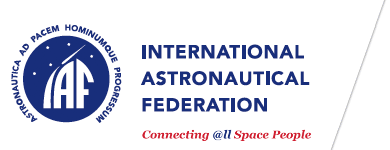NASA's Space Launch System Program Update
- Paper number
IAC-15,D2,1,2,x30093
- Author
Mr. Todd May, NASA Marshall Space Flight Center, United States
- Coauthor
Mr. Garry Lyles, NASA MSFC, United States
- Year
2015
- Abstract
Hardware and software for the world’s most powerful launch vehicle for exploration is being welded, assembled, and tested today in high bays, clean rooms and test stands across the United States. NASA’s Space Launch System (SLS) continued to make significant progress in 2014 with more planned for 2015, including firing tests of both main propulsion elements and the program Critical Design Review (CDR). Developed with the goals of safety, affordability, and sustainability, SLS will still deliver unmatched capability for human and robotic exploration. The initial Block 1 configuration will deliver more than 70 metric tons of payload to low Earth orbit (LEO). The evolved Block 2 design will deliver some 130 metric tons to LEO. Both designs offer enormous opportunity and flexibility for larger payloads, simplifying payload design as well as ground and on-orbit operations, shortening interplanetary transit times, and decreasing overall mission risk. Over the past year, every vehicle element has manufactured or tested hardware. An RS-25 liquid propellant engine was hotfire-tested at NASA’s Stennis Space Center, Miss. for the first time since 2009 exercising and validating the new engine controller, the renovated A-1 test stand, and the test teams. Four RS-25s will power the SLS core stage. A qualification five-segment solid rocket motor incorporating several design, material, and process changes was scheduled to be test-fired in March at the prime contractor’s facility in Utah. The booster also successfully completed its Critical Design Review (CDR) validating the planned design. All six major manufacturing tools for the core stage are in place at the Michoud Assembly Facility in Louisiana, and have been used to build numerous pieces of confidence, qualification, and even flight hardware, including barrel sections, domes and rings used to assemble the world’s largest rocket stage. SLS Systems Engineering accomplished several key tasks including vehicle avionics software and hardware build and testing, scale model acoustic and base heating tests. Construction of the Interim Cryogenic Propulsion Stage (ICPS) began. Advanced development provided a look into the future of SLS. Shell buckling knockdown factor testing refined decades-old design margins that added thousands of pounds to rocket payloads. Adaptive manufacturing and structured light scanning development promised to cut the cost and time associated with manufacturing and testing. This paper will provide an overview of the progress made over the past year and provide a glimpse of 2015 milestones and beyond on the way to the first launch in 2018.
- Abstract document
- Manuscript document
IAC-15,D2,1,2,x30093.pdf (🔒 authorized access only).
To get the manuscript, please contact IAF Secretariat.
